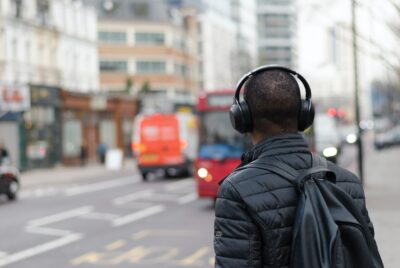Sound is one of the most underrated and underused marketing levers in today’s fast-paced business environment.
Yes businesses use sound and music in marketing elements, but it is not used in the same strategic manner as visual elements.
Take for example a basic marketing campaign. Much planning, resources and budget will go into developing the visual elements of a campaign. A marketing team may start with brainstorming, then go into doing some research, followed by some pitches and presentations relating to potential solutions. Once a particular solution has been selected, the team then goes into overdrive to develop the campaign and to produce the associated marketing mix elements.
The problem with this approach is that most of the work done is heavily focused on the visual, financial and data realms. Now whilst all of these are of course vital, when you consider the power of sound and its influence on our lives, could there not be more impact and effect derived from taking a different approach?
By simple observation and personal experience, not too many can argue against the power of music to influence behavior. Take a simple movie scene where there is a scene of someone delivering some really sad news. Now add some emotive strings and soft piano and suddenly you walk into the room and find tears rolling down the face of the viewer.
Another simple example is that catchy melody from an advert or song on the radio which just won’t stop playing over and over in your head. And just when it has left, someone walks past singing the very same melody… and it’s back for another couple of mind-numbing hours.
According to the American Music Therapy Association (AMTA), music therapy is the clinical and evidence-based use of music interventions designed to:
- Promote Wellness
- Manage Stress
- Alleviate Pain
- Express Feelings
- Enhance Memory
- Improve Communication
- Promote Physical Rehabilitation
Plato once said, “I would teach children music, physics, and philosophy; but most importantly music, for the patterns in music and all the arts are the keys to learning”
A recent pilot study, two field experiments, and five lab studies show that low (vs. high or no) volume music/noise leads to increased sales of healthy foods due to induced relaxation. In contrast, high volume music/noise tends to enhance excitement levels, which in turn leads to unhealthy food choices.
With consumer and shopper experience moving up the priority list for brands and retailers across industries, sound, and music more particularly, have the ability to affect our behavior dramatically.
To create an atmosphere or a product experience that is not just limited to visual reference with some music tagged on, you will need to be more strategic in your approach. The music associated with your business, brand or product, not only needs to be relevant to who or what you represent, but should also be focused on being part of your marketing arsenal to more effectively target your audience.
The Change Cultivators podcast is proudly produced by CB4.






